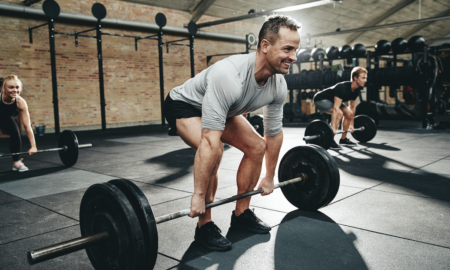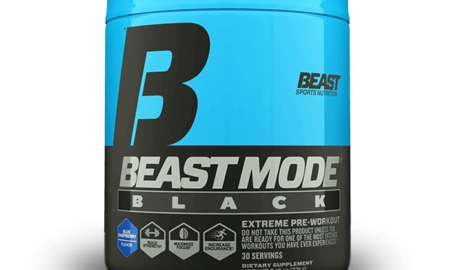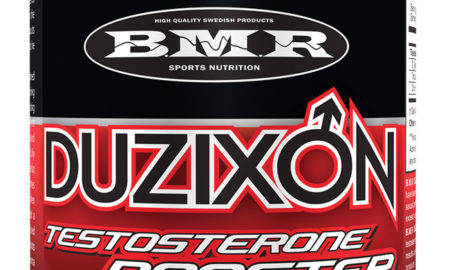Most bodybuilders and other athletes are convinced that human growth hormone injections are a potent ergogenic aid. Just the term growth hormone conjures images of huge muscle size and strength, but the research on GH differs from the popular view of it. Studies show that GH provides the most anabolic effects only in those who are deficient in it—generally cases involving adults over age 40 and children. Supplying supplemental GH to adults in that situation often leads to dramatic improvements in body composition and exercise capacity. The effects differ, however, when it’s used by healthy young adults.
According to the research, those who are not clinically deficient in GH experience little or no anabolic effect. There are, however, exceptions. As I discussed in a recent edition of this column, GH causes rapid and distinct anabolic effects in anyone who is not producing optimal amounts of it naturally. In the study I was citing, bodybuilders who’d just ceased using large doses of anabolic steroids injected GH and did experience definite anabolic effects in only two weeks. On the other hand, they had low levels of insulinlike growth factor 1 after getting off steroids.
IGF-1 is considered the major anabolic effector of GH, and its measurement in the blood is an indicator of GH activity. That occurs because GH promotes the synthesis of IGF-1 in the liver. While naturally secreted GH is degraded in about an hour after release from the anterior pituitary gland in the brain, IGF-1 lasts anywhere from 12 to 24 hours because it circulates in the blood bound to proteins that protect it from premature breakdown in the liver. For that reason, circulating IGF-1 is associated with GH release. GH worked for the bodybuilders because they were in a temporary catabolic state due to testosterone suppression, along with rebound high cortisol and myostatin counts due to high-dose steroid use. That also negatively affected their GH response. Giving them GH corrected the catabolism.
So, if you give GH to athletes right after they stop using anabolic steroids, you can expect a definite anabolic effect. That’s not always what happens, however. Other studies show that taking GH alone causes no anabolic effects in athletes who aren’t deficient in it. While many of them used doses that didn’t resemble real-world use, more recent studies have instead relied on reports of personal GH use, which are not bound by ethical dosage restrictions. Based on those studies, GH alone doesn’t seem to generate any potent anabolic effects in muscle.
Few, if any, athletes use GH only. It’s more often a component of an anabolic stack, likely consisting of a triumvirate of testosterone, insulin and GH. The reasoning behind the combination is that when taken together, the hormones provide synergistic effects above and beyond their individual capacities. Until recently, that remained conjecture based on observations of bodybuilders of normal height weighing more than 270 pounds with spectacular muscle size and no sign of superfluous bodyfat. You didn’t have to be a scientist to realize that such displays of muscle didn’t come from normal training and diet.
Recent studies have confirmed the practical observations that testosterone does have synergistic effects when combined with growth hormone. So far no studies have examined the effects of adding insulin to athletic drug stacks because of the notion that it counteracts the major side effects of taking large doses of GH, such as high blood glucose and possible diabetic-potentiating properties. Insulin also adds to the anticatabolic effects of testosterone and GH and aids muscle glycogen synthesis, resulting in a muscle that appears fuller at contest time.
Still, it’s never been shown that GH alone is a potent anabolic drug in people whose bodies produce normal amounts of it. An often overlooked fact about GH, however, is its effect on connective tissue. Structures such as tendons and ligaments are composed largely of connective tissue, and the protein that lends connective tissue its toughness and strength is collagen. A supposed reason for the athletic use of GH, besides its anabolic attributes, is that it may help to strengthen and heal connective tissue. That can be enormously helpful, often enough on its own to justify GH use. Connective-tissue injuries are the major kind suffered by athletes. The fact that there is still no test that identifies GH use adds to its allure.
Here’s the question: Does GH really help strengthen and heal connective tissue, or is that just another myth? A new study examined the issue.1 It involved 10 healthy but sedentary men, average age 30, and had a double-blind, randomized, placebo-controlled crossover design, the most scientifically acceptable. In that type of study some subjects receive the real drug, while others get a placebo. Then the groups switch—that is, cross over. In this case those getting the genuine GH received the drug for two weeks. During the first week they took 33 micrograms per kilogram of bodyweight per day, which was raised to 50 micrograms starting on the eighth day and continuing to the 14th day. The subjects exercised using a leg extension machine, doing 10 sets of 10 reps with a weight equal to 70 percent of one-rep maximum, a moderately heavy weight.
After two weeks GH had significantly increased collagen synthesis in both tendon and muscle but had no effect on muscle protein synthesis. One new finding was that GH increased insulinlike growth factor 1 in the tendons, as well as systemic IGF-1, which is produced in the liver and circulates in the blood. The authors suggest that it was the increased IGF-1 that led to the upgraded collagen production. While GH didn’t have any effect on muscle protein synthesis, which would have improved muscle size and strength, the increase in supporting connective tissue would likely improve force transmission of the muscle and strengthen it. The connective tissue would also be thicker, stronger and less susceptible to injury.
The exercise, in this case leg extensions, didn’t add to the impact of GH on connective tissue, nor did it add to the hormone’s muscle-protein-synthesis properties. The authors think that GH’s helping to build connective tissue depends on a higher number of total reps rather than the amount of weight used. That makes sense, for connective tissue is known to have a poor blood circulation, and added reps would aid blood flow there. That may help upgrade connective-tissue synthesis as well.
The study concluded by noting that the potent positive effect of GH on connective tissue can be useful in treating injuries and in the healing process. Other preliminary studies have confirmed that, which helps explain the continued interest in GH by many athletes.
If you’re an athlete contemplating the use of high-dose growth hormone for any purpose, you’d be well advised to consider the findings of another recent study.2 While many side effects have been attributed to high-dose GH use, the most common involves painful wrist problems. Several professional bodybuilders have had surgery to correct debilitating wrist problems. The origin of the problems is the impact of GH on connective-tissue growth. Unfortunately, connective tissue doesn’t grow selectively. Some suggest that GH can thicken the tendon sheath that encircles the medial nerve, a nerve that serves the hand, resulting in carpal tunnel syndrome. A more common cause of painful wrists in bodybuilders and other athletes who resort to high-dose GH use is something called de Quervain’s tenosynovitis.
DQT derives its name from the doctor who identified it in 1895. It’s an inflammation of the sheath, or tunnel, that surrounds two tendons that control thumb movement. It’s considered an overuse injury—due to excessive cumulative movement of the hands and thumb—which may occur in assembly-line workers, secretaries, tennis players and golfers. It can also occur after an acute trauma to the thumb or wrist. The incidence of DQT is eight times higher in women and commonly hits them just after pregnancy. The symptoms include pain, tenderness and swelling of the thumb side of the wrist as well as difficulty in gripping.
Using large doses of GH while engaged in weight training puts you at high risk of getting DQT. In fact, it’s probably the most common side effect linked to GH use in bodybuilders. High-dose GH causes edema in the extremities, including the hands and thumb, leading to inflammation. The new study followed 19 weight-training males, all with diagnosed DQT. Nine of them used GH, while the other 10 didn’t. After being diagnosed with DQT, four of the men in the GH group stopped using the drug. All were treated according to the severity of the case. Those with the mildest form took anti-inflammatory drugs twice daily and wore a thumb splint for 21 days. The men with more severe pain got cortisone injections. If the first two treatments failed, the only remaining recourse involved surgery to open up the impinged tendon sheaths.
Only 33.3 percent of those using GH responded to the anti-inflammatory drug and splint compared to 90 percent of those not using GH. Six patients, or 66.6 percent of the GH group, had to move on to cortisone treatment compared to only one in the drug-free group. In the end, six patients on GH had to have surgery, while none in the drug-free group needed it.
The authors suggest that the peripheral edema caused by GH aggravated the symptoms of DQT, leading to failure of the two conservative treatments and requiring surgery for relief. The authors suggest that using large-dose GH can cause a version of DQT that is resistant to conservative treatment and may require surgery. The fact that it’s actually happened to several well-known bodybuilders who’ve used high-dose GH underscores the findings.
Editor’s note: Jerry Brainum has been an exercise and nutrition researcher and journalist for more than 25 years. He’s worked with pro bodybuilders as well as many Olympic and professional athletes. To get his new e-book, Natural Anabolics—Nutrients, Compounds and Supplements That Can Accelerate Muscle Growth Without Drugs, visit www.JerryBrainum.com. IM
References
1 Doessing, S., et al. (2010). Growth hormone stimulates the collagen synthesis in human tendon and skeletal muscle without affecting myofibrillar protein synthesis. J Physiol. In press.
2 Pagonis, T., et al. (2010). Abuse of growth hormone increases the risk of persistent de Quervain tenosynovitis.Am J Sports Med. In press.




















You must be logged in to post a comment Login